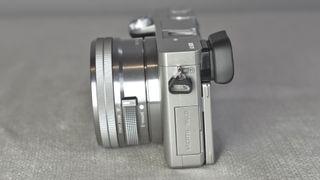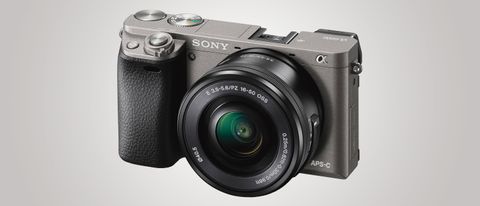Why you can trust TechRadar
Sony is producing some of the most exciting and consistently well performing cameras on the market. Having been extremely impressed with the A7 and the A7R, I was very keen to find out how, what amounts to an APS-C version of those cameras, performs.
I'm pleased to report that the A6000 is capable of producing some fantastic images. Colours are wonderfully saturated, and although this can occasionally err towards over vibrance, generally, the effect is very pleasing.
If you want to experiment with how colours appear straight from the camera, you can adjust Picture Styles. There are a number of presets, such as Landscape, Vivid, Clear or Monochrome, which can be customised, such as by adjusting the contrast. The good thing about Picture Styles is that they can be shot in raw format, so you'll have a "clean" version of the image should you need it at a later point.

The A6000 renders detail very well. Image smoothing starts to become evident from around ISO 400, but only if you're examining at 100%, and only in some areas of the picture. Generally detail is kept well throughout the low-mid sensitivity range, only starting to become problematic for normal print size images from around ISO 6400. ISO 3200 is probably the highest I would feel comfortably shoot with if I wanted to make prints of A4 or below, but I'd go up to ISO 12800 for sharing images online at small sizes.
Examine images taken at ISO 1600 and you'll find areas of the image have a slight painterly effect, but it's not noticeable at smaller, or normal, printing sizes.
The camera's metering system does a good job in general at helping to produce accurately exposed images. However, I have found on several occasions, the A6000 is prone to underexposure, meaning you'll need to dial in some exposure compensation (if shooting in aperture priority or shutter priority) to get a balanced image. This is particularly problematic if you're shooting something with high contrast, and it can help to switch to spot metering.
The automatic white balance is decent at reproducing accurate colours, but some artificial light sources can confuse it slightly, causing it to produce warm or yellow toned images in some circumstances. If you're finding this to be particularly problematic, you can switch to a more appropriate white balance setting, such as Incandescent.

Sony has been very keen to push the fact that the A6000 has the fastest autofocusing speeds of any APS-C format sensored camera. Although I don't think the speeds match those of the smaller Micro Four Thirds format, it doesn't seem to be far off, and, especially in good light, focusing speeds are very impressive.
When light levels drop, the camera will hunt around a little longer, but it's rare for a false positive focus to be displayed on the screen, and generally I have been impressed with lower light speeds – it's definitely an improvement over the NEX-6.
Along with Picture Styles, you can also choose to experiment with Picture Effects. Unlike the Styles, you can't shoot using Effects in raw format, so you'll need to switch to JPEG only shooting first, and it also means that you'll be stuck with whatever filter you use. It's a shame that these can't be shot in raw format, or raw and JPEG format simultaneously, like you can with Olympus or Panasonic cameras. Nevertheless, there is a good selection available, and they're worth experimenting with to see if you particularly like any – my favourites are Toy Camera and High Contrast Monochrome.

As standard, the A6000 is packaged with a 16-50mm f/3.5-5.6 lens. It's a good all-round performer for your first optic, giving you a good range of different focal lengths, and you can also get some pleasing shallow depth of field effects while using it. If you can stretch to the Zeiss 16-70mm f/4 optic, it's a worthwhile investment, as that extra reach can be useful, and generally images shot while using it are sharper. Other E-mount lenses, such as the 50mm f/1.8 optic, are also worth investigating, and it's nice to see such a wide range available now.
Battery life doesn't seem to be quite as bad as the A7/R, probably due to the smaller sensor size, which is positive news. You'll probably still need to purchase an additional battery if you're planning on taking the A6000 on any long trips though, just to be on the safe side.
Amy has been writing about cameras, photography and associated tech since 2009. Amy was once part of the photography testing team for Future Publishing working across TechRadar, Digital Camera, PhotoPlus, N Photo and Photography Week. For her photography, she has won awards and has been exhibited. She often partakes in unusual projects - including one intense year where she used a different camera every single day. Amy is currently the Features Editor at Amateur Photographer magazine, and in her increasingly little spare time works across a number of high-profile publications including Wired, Stuff, Digital Camera World, Expert Reviews, and just a little off-tangent, PetsRadar.


